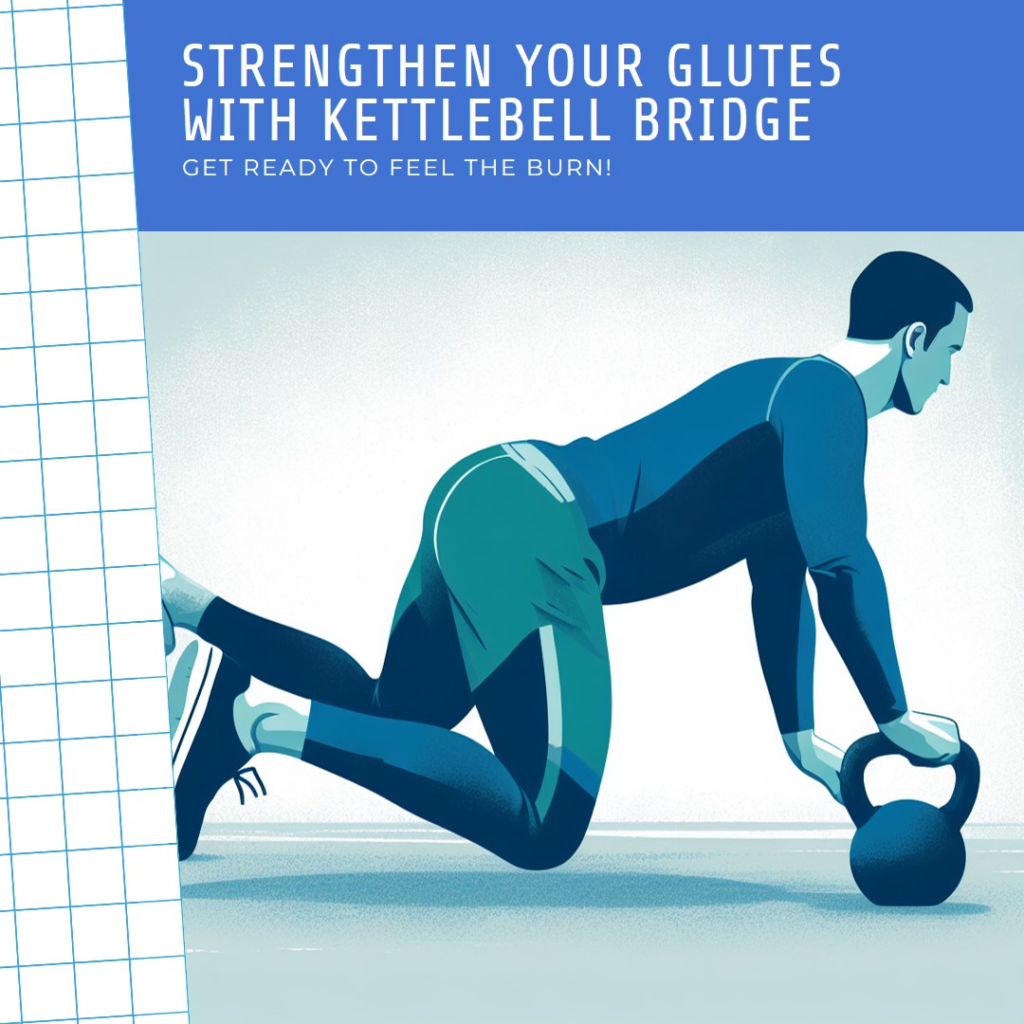Kettlebell Glute Bridge
Are you looking to perfect your form in kettlebell glute bridges? Incorporating kettlebell glute bridge into your fitness routine can be a game-changer, offering a myriad of benefits and a versatile way to boost lower body strength and stability.
This comprehensive guide provides insights into the benefits of kettlebell glute bridges, techniques for perfecting your form, maximizing results with added resistance, common mistakes to avoid, integrating them into your workout routine, and final thoughts on this powerhouse exercise.
The Benefits of Kettlebell Glute Bridges

Kettlebell glute bridge offers a multitude of benefits, making them a valuable addition to any fitness regimen. By targeting the glutes, hamstrings, and core, this exercise can improve lower body strength, power, and stability.
Also, kettlebell glute bridges are an excellent way to activate and develop the often-neglected glute muscles, contributing to better posture and reduced risk of injury in daily activities and athletic endeavors.
The dynamic nature of the movement engages multiple muscle groups simultaneously, making it a time-efficient and effective exercise for enhancing overall lower body strength and function.
Strengthening the Glutes and Hamstrings
The primary function of kettlebell glute bridges is to activate and strengthen the glutes and hamstrings. This can lead to improved athletic performance, better posture, and reduced risk of lower back pain.
Enhancing Core Stability
Engaging the core throughout the movement is essential for maintaining stability and proper form, leading to improved overall stability and balance, beneficial for various physical activities and daily movements.

Time-Efficient and Versatile
Kettlebell glute bridges are a versatile exercise that can be easily incorporated into various workout routines, efficiently targeting multiple muscle groups in a single movement.
Mastering the Technique:
| Step | Instructions |
|---|---|
| Setup and Starting Position | 1. Lie on your back with knees bent and feet flat on the ground, hip-width apart. 2. Place a kettlebell close to your hips. |
| Executing the Movement | 1. Engage core and lift hips off the ground. 2. Squeeze glutes at the top and hold. 3. Lower hips back down. |
Best Kettlebells for Glutes 2024
Proper form is crucial for maximizing the effectiveness of kettlebell glute bridges while minimizing the risk of injury. Follow these steps to ensure you’re performing the exercise correctly:
Setup and Starting Position

- Begin by lying on your back with your knees bent and feet flat on the ground, hip-width apart.
- Place a kettlebell on the floor close to your hips. Ensure that you choose an appropriate weight that allows you to maintain proper form throughout the exercise.
Executing the Movement
- Engage your core and press through your heels to lift your hips off the ground, creating a straight line from your shoulders to your knees at the top of the movement.
- Squeeze your glutes at the top and hold for a brief pause to maximize muscle activation.
- Lower your hips back down to the starting position in a controlled manner, ensuring that your lower back stays in contact with the ground throughout the movement.
Common Mistakes to Avoid
Overextending the Lower Back
Focus on engaging the glutes and maintaining a neutral spine position throughout the entire range of motion to avoid unnecessary stress on the spine and reduce the effectiveness of the exercise.
Allowing the Knees to Cave Inward
Keep the knees in line with the hips and ankles throughout the exercise to avoid improper muscle activation and potential strain on the knee joints.
Using Excessive Momentum
Avoid using momentum to lift the kettlebell during the exercise. Focus on controlled and deliberate movements to ensure that the targeted muscle groups are effectively engaged throughout the entire range of motion.

Adding Resistance: Maximizing Results with Kettlebells
Once you have mastered the basic technique of kettlebell glute bridges, you can add resistance to further challenge your muscles and enhance the effectiveness of the exercise. Here’s how to incorporate kettlebells into your glute bridge routine:
Placing the Kettlebell
- After assuming the starting position, hold a kettlebell securely with both hands, positioning it on your hips.
- The added weight from the kettlebell will intensify the resistance on your glutes and hamstrings as you perform the movement.
Benefits of Added Resistance
Incorporating kettlebells into your glute bridge routine can help promote muscle growth and strength development in the glutes and hamstrings. Also, the increased resistance can elevate the overall intensity of the exercise, leading to greater muscular activation and potential improvements in power and performance.
Progressive Overload
Gradually increasing the weight of the kettlebell over time can facilitate progressive overload, essential for ongoing muscle adaptation and growth.
Common Mistakes to Avoid When Performing Kettlebell Glute Bridges
To reap the full benefits of kettlebell glute bridges and minimize the risk of injury, it’s important to be mindful of common mistakes that individuals often make during this exercise. By being aware of these errors, you can ensure that your form is on point and that you’re maximizing the effectiveness of each repetition.
Rushing Through the Movement
Performing kettlebell glute workout too quickly can compromise form and reduce the activation of the targeted muscles. Focus on executing each repetition with deliberate and controlled movements, emphasizing the squeeze at the top of the movement to fully engage the glutes and hamstrings.
Neglecting Core Engagement
Maintaining a strong and stable core throughout the exercise is essential for proper form and overall safety. Focus on bracing your core muscles from start to finish to support your spine and stabilize your body during the movement.
Using Incorrect Weight
Choose a weight that challenges your muscles without sacrificing proper form. If you find that you’re unable to maintain control or feel excessive strain, consider adjusting the weight accordingly.

Incorporating Kettlebell Glute Bridges into Your Workout Routine
Integrating kettlebell glute bridges into your workout routine can be done in various ways, depending on your fitness goals and the structure of your training program. Here are some suggestions for incorporating this exercise into your regimen:
Standalone Glute Bridge Workout
Dedicate a portion of your workout to performing multiple sets of kettlebell glute bridges, focusing on higher reps and shorter rest periods to emphasize muscular endurance and metabolic stress.
Lower Body Strength Training

Incorporate kettlebell glute bridges into your lower body strength training sessions, pairing them with exercises such as squats and lunges to create a well-rounded lower body workout.
Full-Body Workouts
Include kettlebell glute bridges in full-body workout routines to engage multiple muscle groups and promote overall strength and stability, particularly effective for individuals with time constraints.
Final Thoughts
Kettlebell glute bridges are a versatile and effective exercise for targeting the glutes, hamstrings, and core. By mastering the proper form, adding resistance with kettlebells, and avoiding common mistakes, you can maximize the benefits of this compound movement.
Whether you’re an athlete aiming to enhance performance or an individual seeking to improve lower body strength and stability, kettlebell glute bridges can be a valuable addition to your fitness routine.
Incorporate them strategically into your workouts, and reap the rewards of stronger, more powerful glutes and hamstrings.


